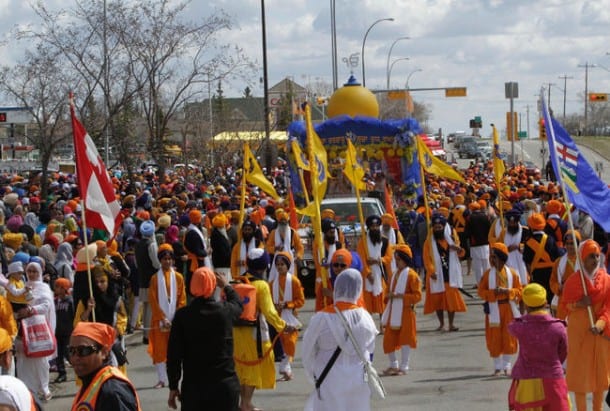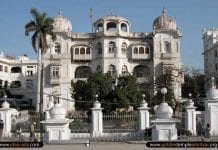SAN ANTONIO, TX, USA—A Smithsonian exhibition featuring the history and culture of the Sikhs is on display in San Antonio, TX until January 2016. The exhibition focuses on the lives of the Sikh Gurus, the maharajas who ruled Punjab before annexation by the British, Sikh ideology and other aspects of the world’s youngest but fifth largest religion. Exhibition also includes some rare Sikh kingdom coins and other.
Following is a press release issued by the Institute of Texan Cultures –
Equality for all people regardless of religion, race, gender or class – it sounds like the American way. It’s also the Sikh way. Since Guru Nanak established the foundation of Sikhism in the early 16th century, members of this religion and culture have struggled to bring about these ideals in society, not by conquest or war, but through hard work, teaching and understanding.Today, members of the world’s fifth largest religion can be found across the globe, including in Texas and San Antonio. From February 21, 2015, to January 3, 2016, the Institute of Texan Cultures will give the community an opportunity to explore the Sikh culture through the exhibit “Sikhs: Legacy of the Punjab,” originally developed by the Smithsonian Institution and sponsored by the Sikh Heritage Foundation.The exhibit covers the tenets of the religion, the history of the people and various aspects of their culture. Like Judaism, the religion is a way of life that binds together a culture, transcending the borders of any homeland.Sikh men are often identifiable by their uncut facial hair and wearing of turbans. This is prescribed by the religion, as hair is seen as a gift from God, and the turban serves not only to contain the hair, but also as an outward symbol of devotion.Sikhs: Legacy of the Punjab traces the origins of the religion to the works of Guru Nanak and his nine successor Gurus. As the exhibit progresses through history, it follows the geopolitical environment of the Punjab region and how neighboring Hindus and Islamic Mughals impacted the Sikhs. Because of the religion’s geographic origins and Sikhism’s tolerance of other religions, Sikh philosophies include teachings attributable to Hindu and Islam.In Texas, Sikhs worked on the railroad and many began building new lives in El Paso, integrating with the local population. In San Antonio, today’s Sikh community comprises some 300 families and will open its second temple in 2015. The Sikh community has often participated in the museum’s Asian Festival and Texas Folklife Festival, assisting friends from Indian and Pakistani organizations, until entering on their own in 2012. The community staffs informational tables and fields a dance team for festival performances.Sikhs: Legacy of the Punjab opens at the Asian Festival, Saturday, February 21, and the Sikh community will provide gallery hosts to assist guests and answer questions about the exhibit and culture. Sikh Family Day is 10 a.m. – 3 p.m., Saturday, March 21, offering hands-on opportunities to learn about the Sikhs and their traditions.The Institute of Texan Cultures is located on the UTSA HemisFair Park Campus, 801 E. César E. Chávez Blvd., a short distance from the Alamo and the River Walk. Regular hours are 9 a.m.-5 p.m., Monday-Saturday; noon-5 p.m. Sunday. Admission is $8 for adults (ages 12-64); $7 for seniors (ages 65+); $6 for children (ages 3-11); free with membership, UTSA or Alamo Colleges identification. For more information, call 210-458-2300 or visit TexanCultures.com.





